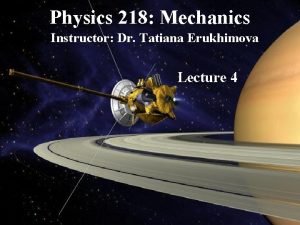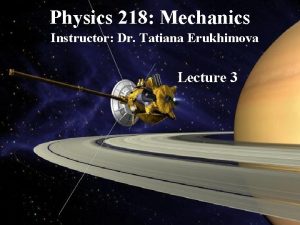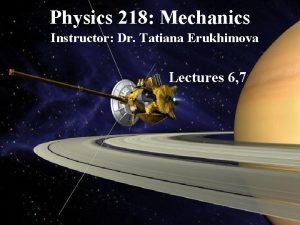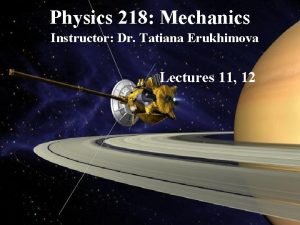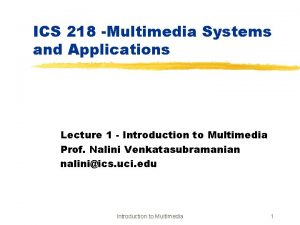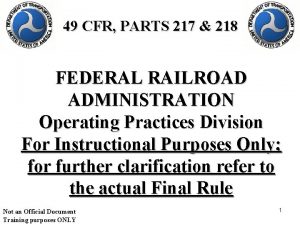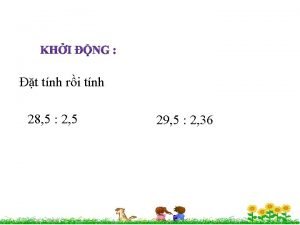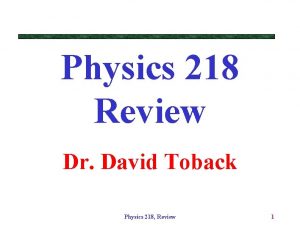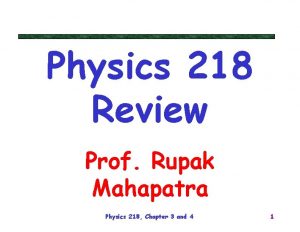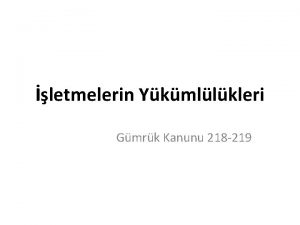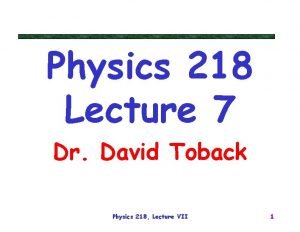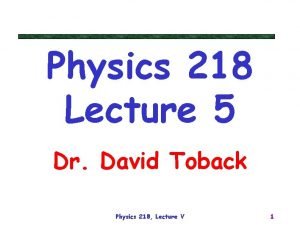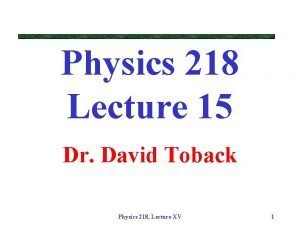Physics 218 Mechanics Instructor Dr Tatiana Erukhimova Lecture














- Slides: 14

Physics 218: Mechanics Instructor: Dr. Tatiana Erukhimova Lecture 4

If a=ac=Const:

Free fall On planet Earth, if you neglect air resistance, any body which is dropped will experience a constant acceleration, called g, independent of its size or weight. g=9. 8 m/s 2=32 ft/s 2 g-positive!

A ball is dropped vertically down (no air resistance) from height H. Find the position x(t) and velocity v(t) of the ball as a function of time. How long is the ball in the air?

A person throws a ball upward into the air with an initial velocity of 15 m/s. Calculate a) How much time does it take for the ball to reach the maximum height? b) How high does it go? c) How long is the ball in the air before it comes back to the thrower’s hands d) The velocity of the ball when it returns to the thrower’s hand e) At what time t the ball passes a point 8. 00 m above the person’s hand

A ball is thrown vertically upward with a velocity of magnitude v 1 from a window at height H. What is the ball’s position and velocity at any time moment? How long does it take to reach the highest point? How long does it take to reach the ground? What is the velocity of the ball when it hits the ground?

A ball is thrown vertically upward with a velocity of magnitude v 1 from a window at height H. In addition to gravity acting on the ball there is another force so that the acceleration in the up direction is –g+ t where is a constant and t is the time. What is the ball’s position when the acceleration is zero?

Falling with air resistance

Falling with air resistance

Terminal Velocity with Coffee Filters where is the resistance force. 1. A penny and a quarter dropped from a ladder land at the same time (air resistance is negligible). 2. A coin dropped in a coffee filter from a ladder lands later than a coin without coffee filter (the terminal velocity is smaller for larger cross-section area). 3. A quarter dropped in a coffee filter will land faster than a penny in a coffee filter (the terminal velocity is larger for larger mass) 4. Two identical coins dropped in coffee filters of different diameters land at different times (the terminal velocity is smaller for larger cross-section area).

Resistance force: A – area of the projectile For a spherical projectile in air at STP: Terminal velocity: A 70 -kg man with a parachute: v. T ~ 5 m/s A 70 -kg man without a parachute: v. T ~ 70 m/s

Adding Vectors by Components 1. Draw a diagram 2. Choose x and y axes. Choose them in a way that make your work easier. (E. g. choose one axis along the direction of one of the vectors so that the vector will have only one component). 3. Resolve each vector in x and y components 4. Calculate each component using sine and cosine. Be careful with signs: any component that points along the negative x or y axis gets a negative sign. 5. Add the x components together to get the x component of the resultant. Similar for y: Vx=V 1 x+V 2 x+… Vy=V 1 y+V 2 y+…

6. If you want to know the magnitude and direction of the resultant vector,

Have a great day! Chapters 3, 4 videos Reading: Chapters 3, 4 problems and exercises
 Area of projectile
Area of projectile Vector quantity
Vector quantity Tatiana erukhimova
Tatiana erukhimova Tatiana erukhimova
Tatiana erukhimova Dr erukhimova
Dr erukhimova Tatiana erukhimova
Tatiana erukhimova Ics multimedia
Ics multimedia Da teu fardo a jesus
Da teu fardo a jesus 49 cfr 217
49 cfr 217 Tìm số dư của phép chia 218 3 7
Tìm số dư của phép chia 218 3 7 01:640:244 lecture notes - lecture 15: plat, idah, farad
01:640:244 lecture notes - lecture 15: plat, idah, farad Wave motion physics notes pdf
Wave motion physics notes pdf Physics 101 lecture notes pdf
Physics 101 lecture notes pdf Classical mechanics
Classical mechanics Atmospheric physics lecture notes
Atmospheric physics lecture notes
